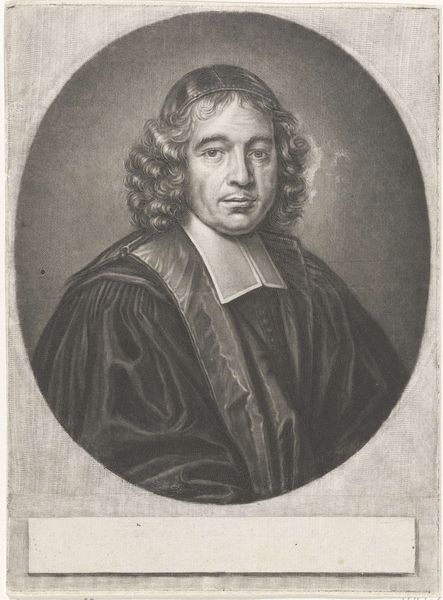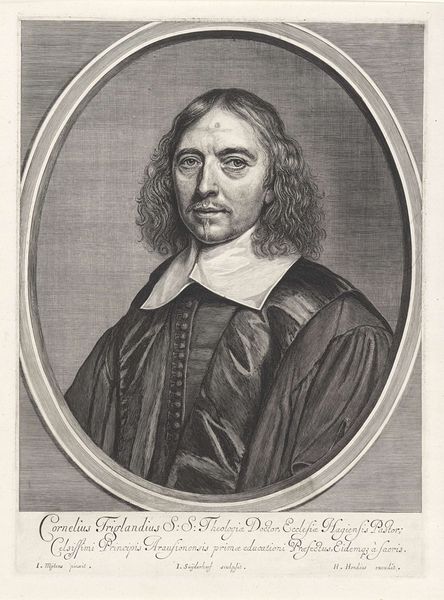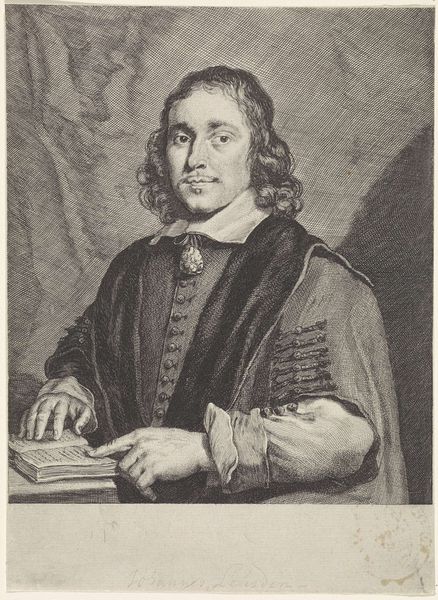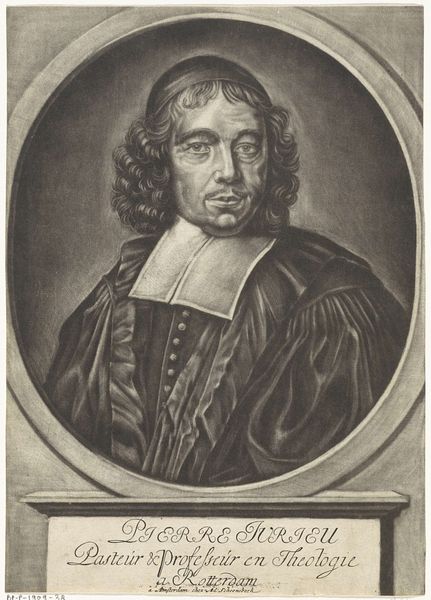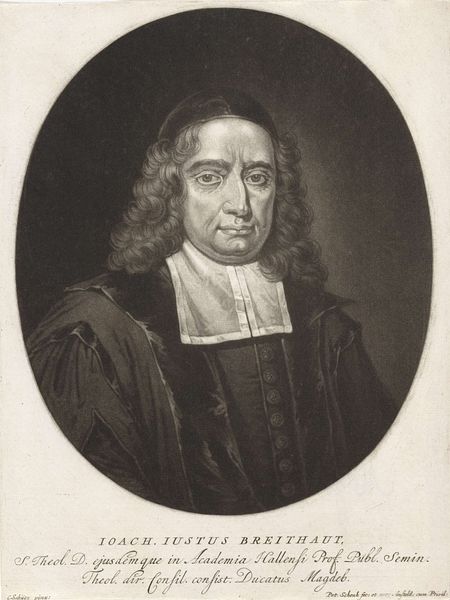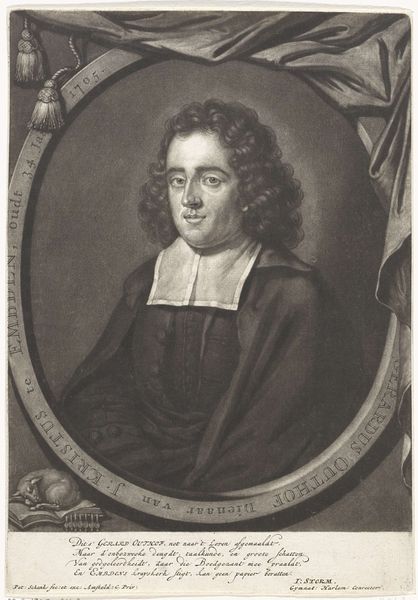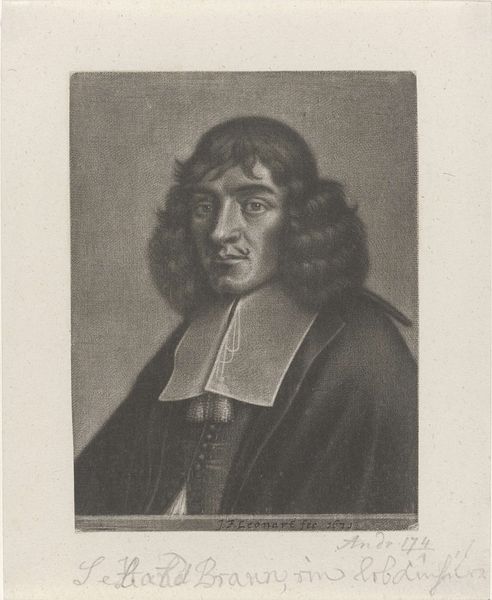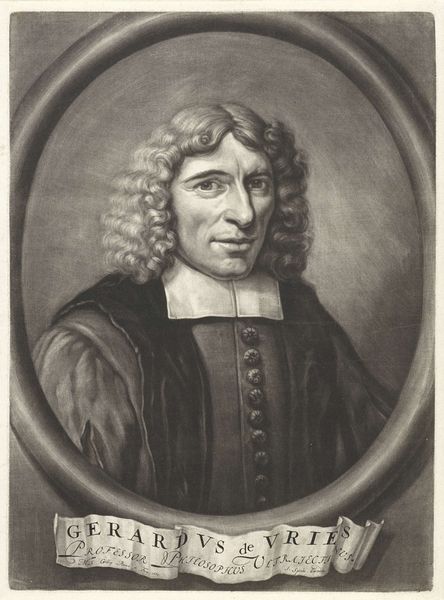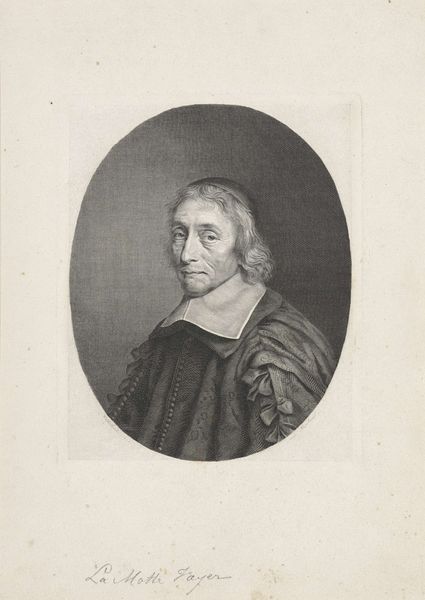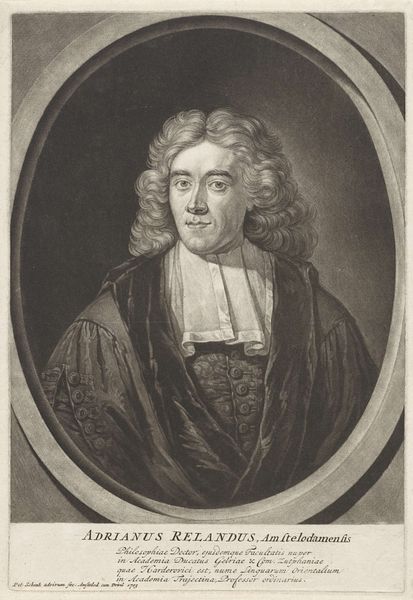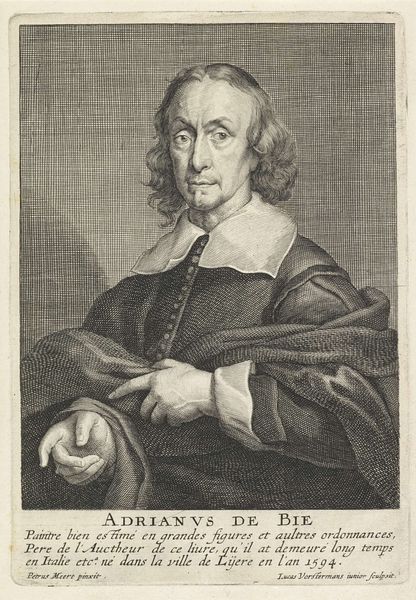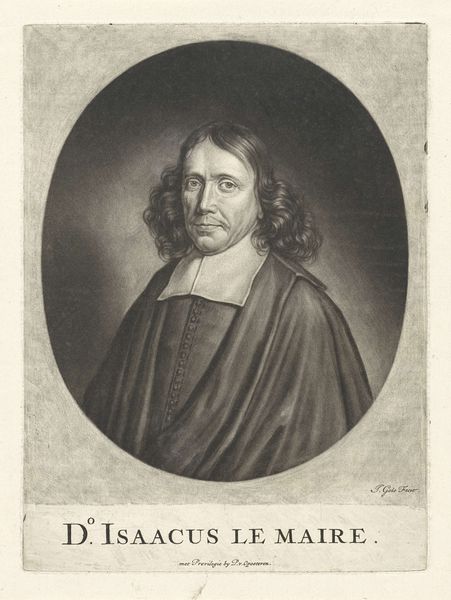
#
portrait
#
baroque
# print
Dimensions: height 282 mm, width 210 mm
Copyright: Rijks Museum: Open Domain
Jacob Gole produced this print of Pierre Jurieu, likely in the Netherlands during the late 17th or early 18th century. This image is more than just a likeness; it's a potent symbol of religious and intellectual identity in a fractured Europe. Jurieu, a prominent Huguenot theologian, was a key figure in the intellectual resistance against Louis XIV's persecution of Protestants in France. Gole's print, therefore, functions as a kind of propaganda, celebrating Jurieu's defiance. Consider the visual cues: the somber attire, the stern gaze, all projecting an image of unwavering conviction. Understanding this print requires us to delve into the religious and political conflicts of the period, exploring the ways in which printmaking served as a tool for disseminating ideas and shaping public opinion. We can examine pamphlets, sermons, and other visual representations of the time to gain a richer understanding of its meaning. The role of art, here, becomes inseparable from the social and institutional contexts in which it was produced and consumed.
Comments
No comments
Be the first to comment and join the conversation on the ultimate creative platform.
